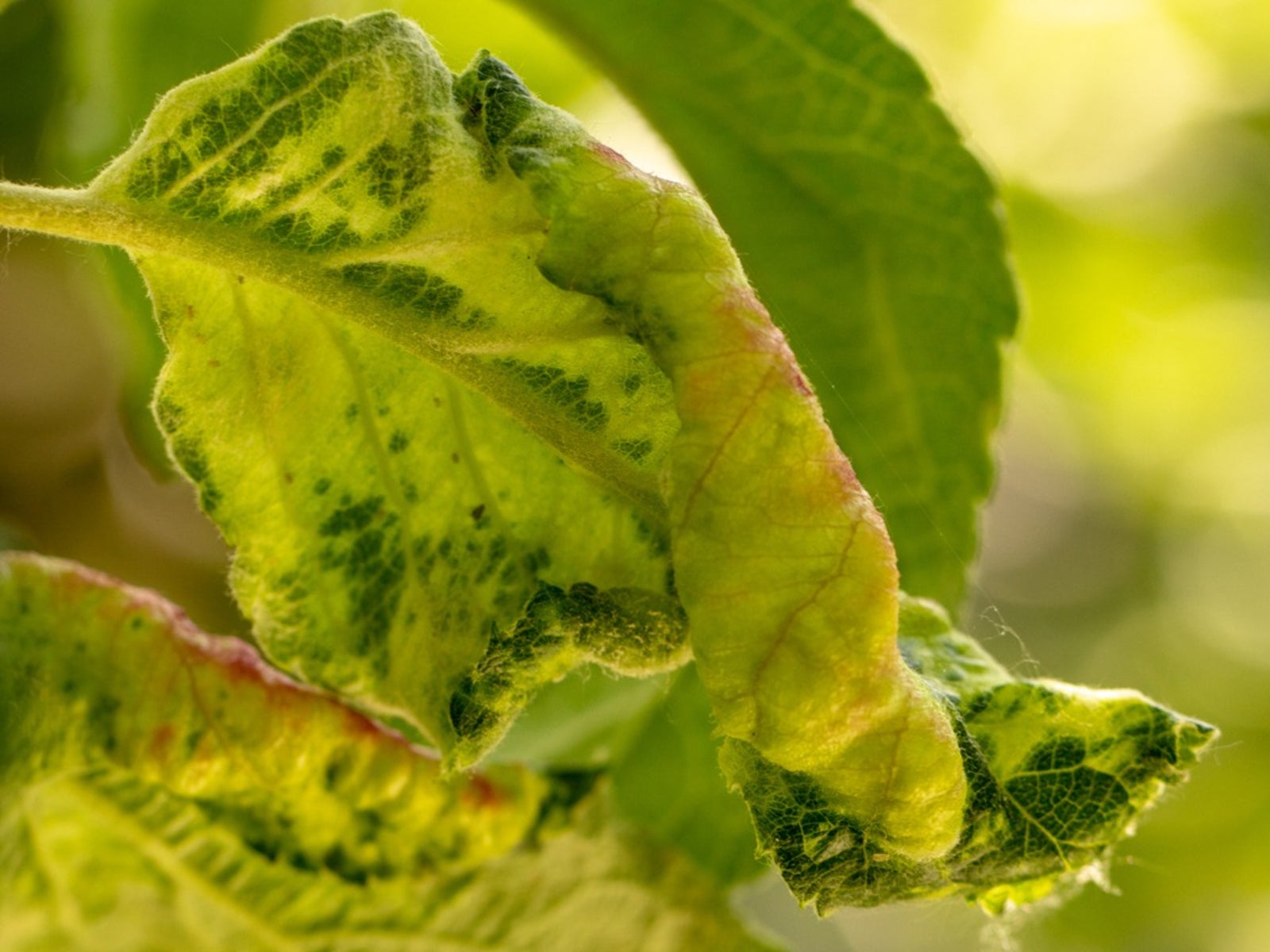Apple Chlorosis Treatment : Why Apple Leaves Are Discolored


Pome fruits are prey to a host of insects and diseases. How do you tell what is wrong when apple leaves are discolored? It could be a myriad of diseases or even stippling from sucking insects. In the case of apples with chlorosis, the discoloration is fairly specific and methodical, making it possible to diagnose this deficiency. Usually, a combination of conditions need to occur in order for chlorosis to happen. Learn what these are and how to tell if your discolored apple leaves are chlorosis or something else.
What is Apple Chlorosis?
Vitamin and nutrient deficiencies in fruits and vegetables can severely affect crop yield. Apples with chlorosis will develop yellow leaves and a diminished capacity to photosynthesize. That means less plant sugars to fuel growth and production of fruit. Many types of plants, including ornamentals, are affected by chlorosis. Apple chlorosis occurs as a result of a lack of iron in soil. It causes yellowing and possible die off of leaves. The yellowing starts just outside the leaf veins. As it progresses, the leaf becomes yellow with bright green veins. In the very worst cases, the leaf will turn pale, almost white and the edges attain a scorched appearance. Young apple leaves are discolored first and develop the condition worse than older growth. Sometimes just one side of a plant is affected or it may be the whole tree. The damage to the leaves makes them unable to photosynthesize and produce fuel to direct fruit production. Crop losses occur and plant health is diminished.
What Causes Chlorosis of Apples?
Iron deficiency is the cause but sometimes it isn't that the soil lacks iron but that the plant cannot uptake it. This problem occurs in alkaline soils rich in lime. The high soil pH, above 7.0, solidifies the iron. In that form, the plant's roots cannot draw it up. Cool soil temperatures as well as any covering, such as mulch, over the soil, can aggravate the condition. Water soaked soil also enhances the problem. Additionally, in areas where erosion or topsoil removal has occurred, incidences of chlorosis may be more common. Discolored apple leaves may also happen due to manganese deficiency, so a soil test is important to diagnose the issue.
Preventing Chlorosis of Apples
The most common way to control the disease is to monitor soil pH. Plants that are not native may require a lower soil pH in order to uptake iron. The application of chelated iron, either as a foliar spray or incorporated into soil, is a quick fix but only acts for a short period of time. Foliar sprays work best in areas with saturated soil. They need to be reapplied every 10 to 14 days. Plants should green back up in about 10 days. The soil application needs to be worked well into soil. This is not useful in saturated soil, but is an excellent measure in calcareous or dense clay soils. This method is longer lasting and will last for 1 to 2 seasons.
Gardening tips, videos, info and more delivered right to your inbox!
Sign up for the Gardening Know How newsletter today and receive a free copy of our e-book "How to Grow Delicious Tomatoes".

Bonnie Grant is a professional landscaper with a Certification in Urban Gardening. She has been gardening and writing for 15 years. A former professional chef, she has a passion for edible landscaping.
-
 8 Perfect Flowers To Plant With Tomatoes To Boost Yields & Banish Pests
8 Perfect Flowers To Plant With Tomatoes To Boost Yields & Banish PestsDon’t forget flowers when choosing companion plants for your tomato beds or pots. These pretty, fragrant blooms add beauty but are also highly beneficial.
By Mary Ellen Ellis
-
 Want The Longest Lasting Hydrangea Flowers? Grow These 8 Panicle Hydrangea Varieties
Want The Longest Lasting Hydrangea Flowers? Grow These 8 Panicle Hydrangea VarietiesFor ornamental shrubs that deliver the longest flowering seasons with plush blooms and delicate hues, these panicle hydrangea varieties are essential in your yard
By Tonya Barnett